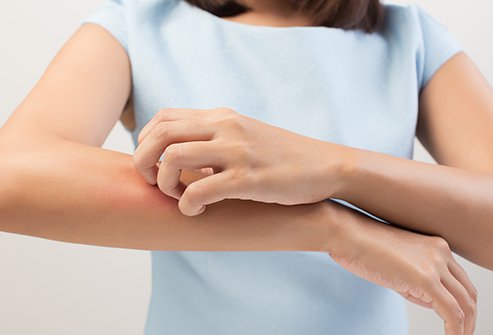Morgellons Disease
What is Morgellons disease?

Morgellons disease is a delusional disorder that leads to the belief that one has parasites or foreign material moving in, or coming out of, the skin. Morgellons disease is a little-known disorder that is often associated with nonspecific skin, nerve, and psychiatric symptoms. Some refer to it as a fiber disease. People with this disorder seem to be more likely to develop low thyroid functioning (hypothyroidism). Caucasian females from about 35 to 50 years old tend to develop this uncommon condition more than other groups, and Texas and California seem to have a higher incidence of this condition than other U.S. states.
What causes Morgellons disease? Is Morgellons disease contagious?
There are reports of Morgellons disease in patients with Lyme disease. Many health care professionals believe that Morgellons disease is a form of psychosis that causes the person to imagine that they are infested by parasites (delusional parasitosis) rather than a diagnosis based upon physical signs. Research on this syndrome has so far not found it to be caused by an infection. It is therefore not contagious. This condition has not been found to be the result of an environmental toxin.
What are Morgellons disease symptoms and signs?
People with Morgellons disease often complain of
- skin itching,
- burning,
- feeling like there is something crawling under their skin.
They also often report that they have what look like threads, hair, or fuzz coming out of lesions on their skin. Some practitioners have observed the fibers coming out of the skin of Morgellons disease sufferers, leaving what pictures indicate are disfiguring lesions behind. For these reasons, Morgellons disease is sometimes referred to as skin crawling disease. The individual with this problem may feel that they have skin mites, springtails (collembola), or scabies that cause the skin sensation. Other symptoms that are sometimes associated with this condition include
- depression,
- chronic fatigue,
- tobacco use,
- difficulty thinking clearly.
How do health care professionals diagnose Morgellons disease?
There is no established standard for the diagnosis of Morgellons disease. As with people suffering from most medical complaints, health care professionals tend to assess individuals for this condition by gathering historical information about symptoms, as well as asking questions about medical and mental health symptoms. They perform a physical examination and may order a variety of lab tests to determine the appropriate diagnosis. To assess the specific skin complaints associated with Morgellons disease, the medical professional might request a skin biopsy.
What are treatment options for Morgellons disease?
While there is no specific cure for Morgellons disease, individuals who suffer from this condition have been found to benefit from medications that treat psychosis or tics, like olanzapine (Zyprexa, Zydis, Relprevv) or pimozide (Orap), respectively.
What is the prognosis for Morgellons disease?
Unfortunately, the prognosis for this disorder is difficult because of the lack of clarity regarding its symptoms, diagnosis, and potential causes.
Editor's addendum: According to the U.S. Centers for Disease Control (Pearson, et al., 2012, reference below), "This condition is not currently recognized as a distinct clinical disorder with established diagnostic criteria that are generally accepted by the medical community and many dermatologists consider the condition to be synonymous with delusional parasitosis (DP). To date, most of what is known about the condition is based on isolated case reports or anecdotal accounts. A range of potential infectious (for example, Lyme disease, parasitic) and non-infectious causes has been postulated, but the etiology of this condition remains unknown and there have been no proven effective medical therapies."

